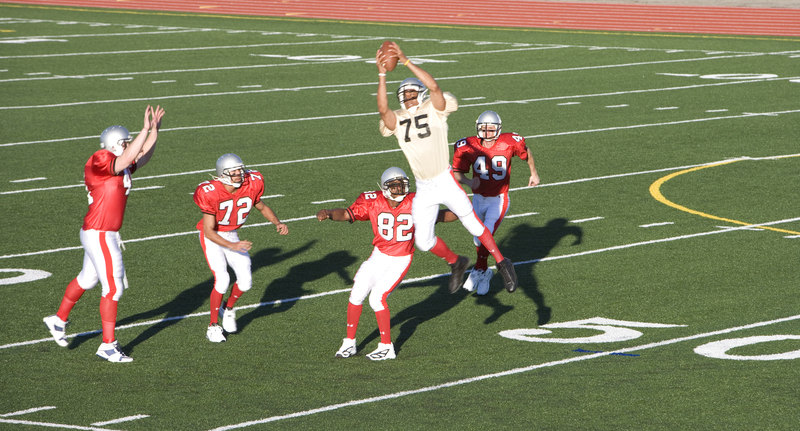Chris Stack is a an expert in college recruiting education, check out his bio to learn more about him and the impact he is making on educating prospective student-athletes about the college recruiting process.
Playing intercollegiate athletics is an experience that provides student-athletes with the opportunity to excel in a sport they love, while building an educational foundation for their future. However, being a student-athlete is much more than going to class and playing sports.
College is meant to provide young adults an experience to learn, grow, and develop in all aspects of their life. In order to be a successful student-athlete who excels in the classroom, on the field, and in the community you must master “The 3 S’s”, School, Sports, and Social Life.
The First S, and most important, is the School.
The reason to attend college is to gain a solid education that will help you find a career path in order to help build a life for yourself after graduation. Balancing your academic responsibilities will be important if you want to be successful in your athletic endeavors. If you are not doing what you need to do in the classroom, you will not get the opportunity to perform on the field, court, pool, etc.
As a student-athlete you must be enrolled in a minimum of 12 Credit Hours per semester. Typically, most student-athletes are enrolled in 12-15 credit hours, or 4-5 classes, per semester. In short, the credit hours means how many hours per week are you in the classroom.
Experts say to achieve sufficient grades you should be spending 1.5 – 2 times the amount of time spent in the classroom on work outside the classroom, or homework. For a typical student-athlete who is enrolled in 15 credit hours they should be doing somewhere between 20-25 hours of work outside the classroom. To break it down by class, if you are in each class for 2.5 – 3 hours/week, you should be doing 5-6 hours of work outside the class. Your academic responsibilities will require around 25-30 hours of your time each week. A third of your time on campus will be dedicated to School.
The Second S is Sports.
When it comes to importance, if School is #1, then Sports is 1A.
There are obviously expectations of you as a student-athlete, from yourself, your coaches, teammates, and the school itself. That can be a lot of pressure on one individual, so being able to manage those expectations is essential.
The first step is understanding is the time you are going to need to dedicate to your sports.
In your Championship Season, your team is allowed up to 20 hours of Countable Hours of Related Athletic Activity (CHARA). This is across the board NCAA Division I, II, and III. CHARA, as it is known, includes team practices, lifting, conditioning, individual workouts with a coach, and film sessions. What this does not include is voluntary workouts, team meetings, rehab, community service projects, fundraising initiatives, etc. You can expect to dedicate anywhere from 30-35 hours per week dedicated to your sport.
As a student-athlete, you are expected to be a good representation of your team and the school. You need to follow all of the team, school, and conference rules.
As a student-athlete, you are also going to have to make sacrifices along the way and possibly miss out on some experiences you would otherwise not miss if you were a regular student.
Being a student-athlete may require you to miss class time due to competitions. You are responsible for the work you missed while out of class. You are prohibited from missing classes due to any practices, lifting, conditioning sessions. If a coach asks you to, then you should report that to the appropriate authority in the athletic department, usually the Director of Compliance.
After it is all said and done, you will spend around 60 hours of your week focused on your academic and athletic responsibilities, that is almost half of your waking hours on campus. They say playing college sports is like a job…well it is because part of that job is going to class, so 60 hours a week is like a full-time job.
The Last S is Social Life.
Your Social Life makes up the final piece of the college experience. It can’t just be school and sports for 24/7, or you will go crazy. You need to make time for your friends and finding time to step away from the first 2 S’s.
However, School and Sports will always need to come before your Social Life, so make sure you have your priorities straight. As a student-athlete, there are a lot of different activities for you to take advantage of. There are different clubs/organizations you can join. Some of my best moments of being a student-athlete was dorm living, just hanging around with my friends watching TV, movies, playing video games, or making up some crazy new game like “Hall Ball.” We all need time to unwind from the daily pressures of being a student-athlete. Make sure you find time to just be a college kid.
As you are navigating through the college recruiting process, keep the 3 S’s in mind. Find the school that will provide you with the best college experience academically, athletically, and personally. The school you ultimately select should be the one where you will develop in all aspects of your life.
CoachUp is the safest and easiest way to find a coach for personalized training. With our 100% money-back guarantee and vetted coaches, anyone can achieve their full athletic potential. Find your perfect coach today and become the athlete you want to be!
How useful was this post?
Click on a star to rate it!
Average rating 3 / 5. Vote count: 2
No votes so far! Be the first to rate this post.






